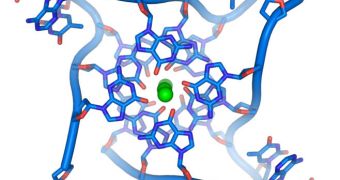Over the past few years, experts have come to realize that malfunctions in the life cycle of ribonucleic acid (RNA) – one of the most important molecules in any organism – are the root cause of numerous diseases. In a new study, experts provide a new way of investigating RNA in great detail.
For a rather long time, scientists have believed that the most important role this molecule fulfilled in the body was to carry DNA messages between various cellular components. While that in itself was enough to make it of critical importance, new roles are now beginning to emerge.
New investigations are showing that the life cycle of RNA has a great contribution to the way cells are able to handle damage or infection. RNA concentrations were also found to vary under specific circumstances. What this means is that the amount of RNA in a cell is no fixed, but dynamic.
“People are discovering more and more how the RNA life cycle is at the heart of problems we see in disease, but we actually understand a lot less about it than we understand about many other cellular processes,” explains co-senior paper author Aviv Regev.
The expert is a core faculty member at the Broad Institute, an organization affiliated with the Harvard University and the Massachusetts Institute of Technology (MIT). He and his group were able to create a new study method, that enables them to analyze each stage in the RNA life cycle.
This is made possible by measuring the amount of RNA that is being produced at any given time, and the amount that is degraded in the same interval. If RNA production was steady, then this measurement would always yield the same result.
However, the team determined that the result varies, which means that RNA concentrations can also be influenced by external factors, such as for example pathogens, Daily Galaxy reports.
“We wanted to understand how cells regulate RNA levels, and if regulation happens at the step of producing the molecule, degrading the molecule, or processing it,” explains researcher Michal Rabani.
“Each of these steps can affect the level of active RNA molecules in cells. If you want to understand what happens when things go wrong, you have to understand how things work when they work as they should,” he goes on to say.
Rabani is the first author of the new paper and also an MIT graduate student at the Broad Institute.
“We're decomposing these RNA levels, breaking them down into each separate step, so that we can understand what happens at each of these steps and how they interact with each other to produce the final read out,” he explains.
“It's a very complex system, but understanding it could eventually help us understand what goes wrong when things don't work,” the investigator concludes.

 14 DAY TRIAL //
14 DAY TRIAL //